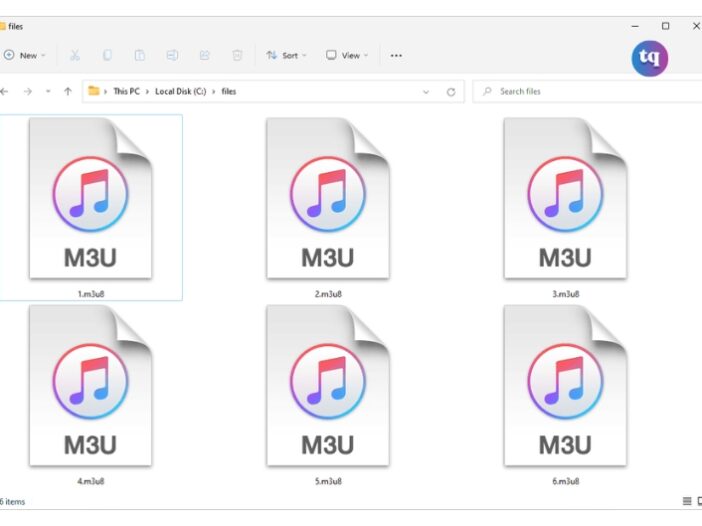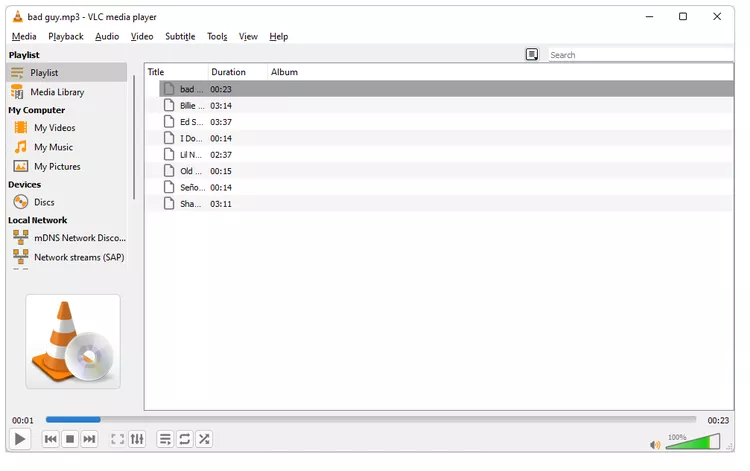
Streaming media has become a huge part of our content consumption.
You may not have heard much about M3U8 files, but they’re crucial since they make streaming technology work smoothly.
So what exactly is an M3U8 file, and why is it important?
In this article, we dive deeper into what these files are, how they function, what they could be used for, and how to work with them. Let’s dive in!
Table of Contents
What Is an M3U8 File?
M3U8 are playlist files used by video and audio players to store the location of media files. The stored information is in plain text, which helps the user to play media files quickly. These files may use URLs or absolute paths to refer to a specific media file or a folder.
These files can also contain the stored information of online media files of internet radio stations. Major media players like iTunes, VLC Media Player, and Windows Media Player are compatible with these files. As the stored information is in the form of plain text, you can also use a text editor like Microsoft Notepad and Apple TextEdit to open your media files.
How to Open an M3U8 File
M3U8 files can be edited and read by most text editors, including Notepad in Windows. However, opening one with Notepad only lets you read the file references. You can’t play any of these music files like this because text editors aren’t the same as media players or media management programs.
If you’re looking for a good program to open and use M3U8 files, try VLC, iTunes, or Songbird. Another way to open one on Linux is with XMMS, while CocoModX should work for Mac users (in addition to some of those Windows-compatible programs).
Here’s an example of the M3U8 file imported into VLC, which will gather all the music files referenced in the text file and load them into the media player for playback.

One quick way you can open the file online is through HSLPlayer.net. However, this website will not work if you have an M3U8 file stored on your computer or some other device. You can only use it if you have a URL to the file and the contents it references are also online.
How to Convert an M3U8 File
If you’re looking to convert M3U8 to MP4, to MP3, or any other media format, you first need to understand that this format is plain text—nothing more and nothing less. This means it just contains text, nothing that can actually “play” like how an MP4 or MP3 file can play in a media player.
If you do find a converter that claims to save the playlist to a video file format, all it’s doing is finding the video from the path described in the M3U8 file and then running that file through the converter. It’s impossible to save this text-based format to anything but another text format.
What you’re probably after is a file converter that can convert the audio or video files that the M3U8 refers to, to and from other audio/video file formats, like an MP4 to AVI converter or a WAV to MP3 converter (or any other variation of these types of files).
The only problem with doing this is that sometimes this file points to media files that are in several locations at once. This may include various folders on one or more internal hard drives, flash drives, and/or external drives.
In this case, just download the free program M3UExportTool. It uses the playlist file to identify the source for all the media files and then copies them to a single location. From there, you can easily convert them with a video or audio converter.
However, some of the programs mentioned earlier, like VLC, can re-save an open M3U8 playlist to another format like M3U, XSPF, or HTML, which is essentially the same thing as a conversion.
Uses and Applications of M3U8 Files
M3U8 files have a range of uses and applications. One of the primary uses is in streaming services. They’re great for live broadcasts, on-demand videos, and adaptive bitrate streaming. With these files, streaming platforms can ensure users have a seamless and uninterrupted streaming experience.
Another notable application is playlist generation. These files are used to create playlists for music and video players, allowing users to organize their media as they desire. Whether you want to create a music playlist for your workout session or curate a collection of your favorite videos, M3U8 files make it possible.
M3U8 files also come in handy for seamless advertisement insertion. By leveraging these files, streaming platforms can seamlessly insert advertisements without disrupting the viewing experience. This ensures that advertisements blend smoothly with the media content, providing a less intrusive advertising experience.
Additionally, M3U8 files offer cross-platform compatibility. They’re an excellent option for ensuring compatibility across various platforms and media players like VLC, Windows Media Player, and iTunes. These well-known media players understand and interpret M3U8 files. The HLS Player – M3U8 Streaming Player for Chrome is also a viable option for playing these files in your web browser.
Working With M3U8 Files
Working with M3U8 files involves creating and consuming them. Content creators can use tools like media servers, encoding software, and content management systems to generate M3U8 files.
On the other hand, consumers can access it through media players that support HLS streaming. For live streams, an internet connection is required. However, you can download the segments first to watch offline. This allows you to access the content without an internet connection.
You can open M3U8 files in a plain text editor to inspect the segment URLs. Just ensure that your software is updated to handle M3U8s correctly.
Creating custom playlists with M3U8 files involves creating a plain text file with the “#EXTM3U” header as seen above, adding segment paths or URLs one per line, and including metadata like title and duration. Finally, save the file with the “.m3u8” extension.
To convert M3U8 files to other formats, such as MP4, you should use video converter tools that support the desired format. Additionally, choose the appropriate resolution, codec, and other settings according to your preferences. Consequently, converting these files is helpful if you want to watch them on devices that may not support the M3U8 format.
Troubleshooting Common M3U8 File Issues
You may encounter issues like playback errors or incorrect file paths while opening M3U8 files. Here are some troubleshooting tips:
- When opening M3U8 files with streaming links, use a stable data connection with sufficient bandwidth.
- Ensure you’re using the latest version of your preferred media player, like VLC.
- Double-check that the links listed within the file are correct. Be especially careful with local file paths or URLs containing special characters. If possible, always copy and paste the links or paths.
Conclusion
M3U8 files are crucial for seamlessly streaming multimedia content across various devices and platforms. With their ability to adapt to different network conditions and seamless integration with streaming services and some desktop media players, they are essential to the digital media landscape.
If you can’t open the file using the methods above, there’s a good chance your file isn’t actually in this playlist format. Some file extensions look a lot like this, so you’d be wise to double-check yours.
FAQs
M3U8 stands for “MP3 URL playlist file format version 8.” The “8” refers to the format’s UTF-8 encoding, a system that stores all the characters your device uses. It is a plain text file format containing multimedia playlists, typically used to stream audio and video content over the internet.
MP4 files are static and cannot adjust to network conditions, While m3u8 files enable adaptive streaming, ensuring optimal video quality based on the viewer’s bandwidth and device capabilities.
m3u8 is not a video format, it is a pointer to an online video source. if it doesn’t play, it may not be available online or the file may have relative URLs in it, which means that it will only work if you supply an absolute URL or rewrite the file.
M3U8 files use UTF-8 encoding, making them more suitable for international content, while M3U files use a different encoding.